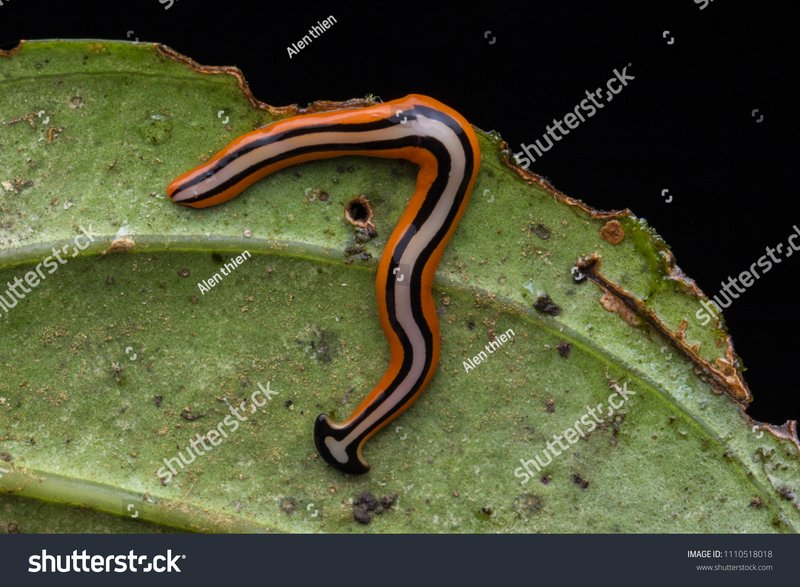
Now, picture yourself peering into the underwater world, where these creatures thrive. Ribbon worms, or *Nemertea*, are not just interesting to observe; their feeding techniques play a crucial role in their ecosystems. Let’s dive into the nitty-gritty of how they snag their prey, from their hunting strategies to their impressive anatomy that makes it all possible.
The Anatomy of a Ribbon Worm: Nature’s Design
First things first, let’s talk about what makes ribbon worms special. Their bodies are long, slender, and often vividly colored, which is great for camouflage. But what really sets them apart is their unique anatomy. Ribbon worms possess a specialized feeding structure called a **proboscis**. This is a long, tube-like appendage that can be extended quickly to capture prey.
When a ribbon worm is ready to eat, it can shoot out its proboscis. Think of it like a slingshot or a dart; it can deliver a sticky or venomous substance to immobilize its dinner. Depending on the species, this proboscis can handle various types of prey, including small fish, crustaceans, and even other worms. Isn’t that fascinating? It’s this adaptability that makes ribbon worms such effective predators.
In addition to the proboscis, ribbon worms also have a **digestive system** that allows them to break down food efficiently. Once their meal is caught, it’s drawn into their body, where enzymes break it down for absorption. It’s like a finely-tuned factory, turning raw ingredients into energy.
Feeding Techniques: The Art of Capture
Now that we’ve got the anatomy down, let’s explore some common feeding techniques used by ribbon worms. Each method showcases the creativity and resourcefulness of these creatures.
- Active Hunting: Some ribbon worms are active hunters, using their speed and stealth to chase down prey. They can wiggle their bodies to blend in with the surroundings, waiting for the perfect moment to strike.
- Ambush Feeding: Others prefer a more patient approach. They might bury themselves in the sand or camouflage against rocks, waiting for unsuspecting prey to come close. When the moment is right, their proboscis shoots out to snatch the meal.
- Filter Feeding: Some species have adapted to filter feeding. They extend their bodies into the water column, capturing tiny plankton and organic material. It’s a more passive method but is effective in nutrient-rich waters.
Each of these techniques showcases the incredible versatility of ribbon worms. Whether they’re racing after a meal or lying in wait, they adapt their strategies to suit their environment and available food sources.
The Role of Venom: A Double-Edged Sword
You might be wondering about the role of venom in ribbon worm feeding. Many species possess venom that helps them subdue their prey. This venom isn’t just for show—it’s a powerful tool in their hunting repertoire.
When a ribbon worm captures its prey, the venom is injected to immobilize it quickly. This allows the worm to capture larger or more active prey than it might otherwise manage. Imagine trying to catch a slippery fish with your bare hands; a little help from a paralyzing substance makes the task much easier!
However, the use of venom also comes with risks. Not all prey are easily subdued, and a failed attempt can lead to injury. Ribbon worms have evolved to balance this risk, honing their techniques over generations.
Comparing Feeding Methods: Ribbon Worms vs. Other Predators
It’s interesting to think about how ribbon worms stack up against other predators in their habitats. For instance, let’s compare them to more familiar creatures like octopuses or fish.
- Octopuses: Like ribbon worms, octopuses are skilled hunters. However, they rely on intelligence and problem-solving skills, using their ability to camouflage and a variety of tools to capture prey.
- Fish: Fish may chase after prey more actively, relying on speed and agility. While they often have sharp teeth for catching and eating food, ribbon worms have their unique advantages with their proboscis.
What’s fascinating is that each creature has adapted its feeding methods to thrive in its specific environment. Ribbon worms may not have the brainpower of octopuses, but their evolutionary adaptations make them masters of their domain.
Challenges Ribbon Worms Face While Feeding
Even with their impressive feeding techniques, ribbon worms encounter challenges in the wild. Here are a few hurdles they may face while searching for dinner:
- Competition: In bustling underwater ecosystems, other predators—like crabs or larger fish—constantly compete for the same food sources. Ribbon worms must be strategic and selective in their hunting methods.
- Environmental Changes: Factors like pollution, habitat loss, and climate change can impact their prey availability. Less food means a tougher time for these worms to survive.
- Predators: Ribbon worms, despite their predatory prowess, aren’t at the top of the food chain. They have foes like larger fish and seabirds waiting for a chance to snag them.
With these challenges, it’s clear that ribbon worms must remain adaptable and resourceful to thrive.
Conservation and the Importance of Ribbon Worms
You might be surprised to learn how important ribbon worms are to their ecosystems. As both predators and prey, they play a vital role in maintaining balance in marine life. By controlling the populations of the organisms they feed on, they help promote a healthy underwater environment.
In some areas, ribbon worms are indicators of ecosystem health. A decline in their numbers can signal problems in the marine habitat, like rising pollution levels or habitat degradation. Protecting these creatures can have far-reaching effects on the entire ecosystem.
As we navigate a world facing various environmental challenges, understanding and conserving ribbon worms is essential. Their fascinating feeding techniques remind us of the intricate connections within our oceans.
Exploring the feeding techniques of ribbon worms reveals just how remarkable these creatures are. Their specialized anatomy, diverse hunting strategies, and importance in the ecosystem truly make them stand out in the animal kingdom.
By learning about ribbon worms, we get a better understanding of the delicate balance in marine environments. So, next time you think about life underwater, consider the ribbon worm—the quiet but effective predator with skills honed over millions of years. Their story is one of adaptation and survival that echoes through the tides.

